
Find Help
More Items From Ergsy search
-

How do water companies detect leaks?
Relevance: 100%
-

Why is it challenging to fix water leaks in the UK?
Relevance: 65%
-
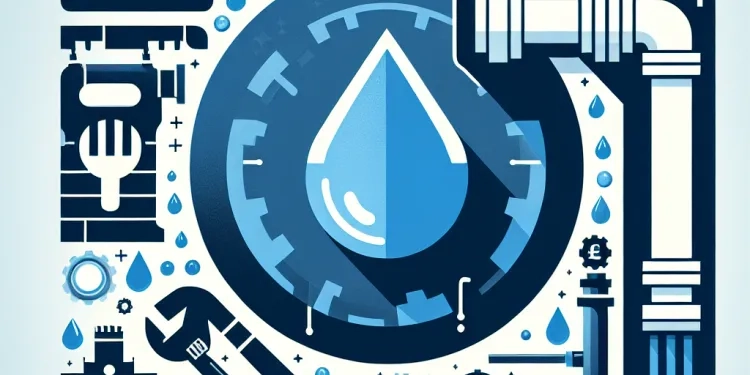
What are common signs of leaks in water infrastructure?
Relevance: 58%
-

Are water companies responsible for maintaining water infrastructure in the UK?
Relevance: 53%
-
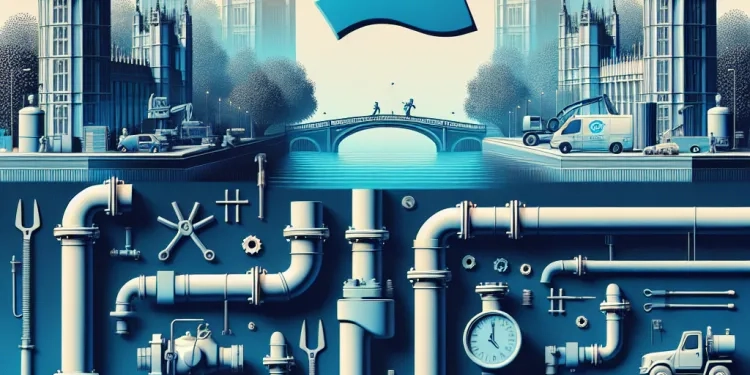
What challenges do water companies face in maintaining infrastructure?
Relevance: 52%
-

Do water companies have to update the infrastructure?
Relevance: 50%
-

How significant is the water loss problem in the UK?
Relevance: 48%
-

How much water is lost in the UK through poor infrastructure?
Relevance: 48%
-

How are new technologies helping to reduce water loss in the UK?
Relevance: 47%
-

When will the refunds be issued by the UK water companies?
Relevance: 46%
-

What percentage of water is lost through leaks in the UK?
Relevance: 46%
-

Are water companies responsible to maintain and update infrastructure in the UK?
Relevance: 45%
-
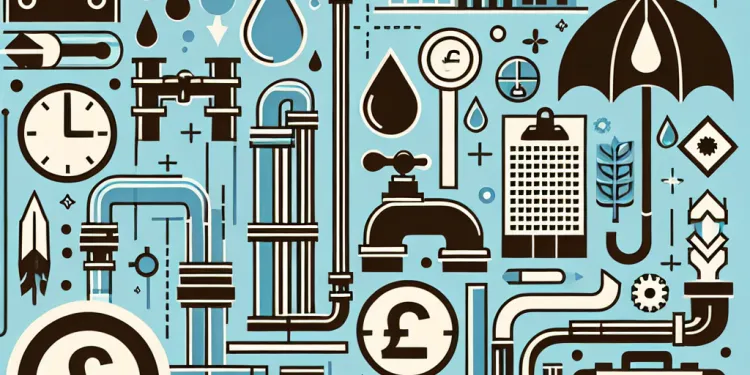
Do water companies have long-term infrastructure plans?
Relevance: 44%
-
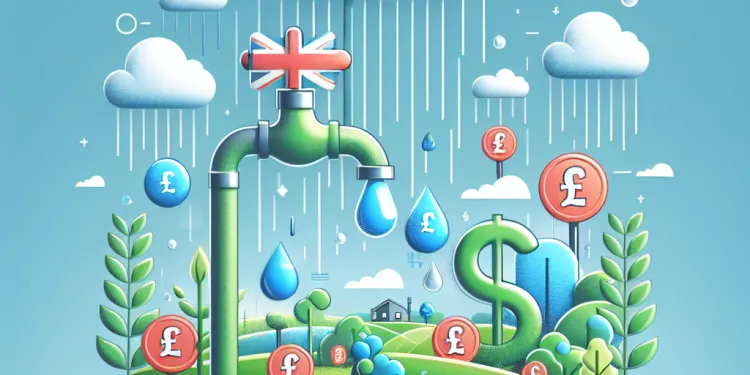
What causes water loss in the UK?
Relevance: 44%
-
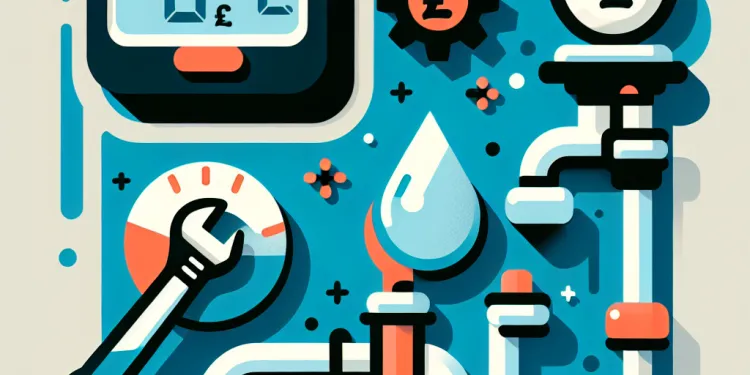
What measures are being taken to address water loss in the UK?
Relevance: 44%
-
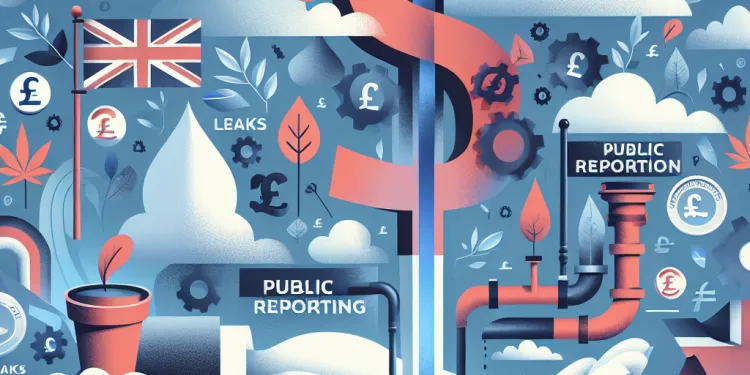
How does public reporting contribute to fixing leaks?
Relevance: 43%
-

How many UK water companies are involved in the refund process?
Relevance: 43%
-

What role do water companies play in sewage pollution?
Relevance: 43%
-

Are there any government initiatives to tackle water loss in the UK?
Relevance: 42%
-
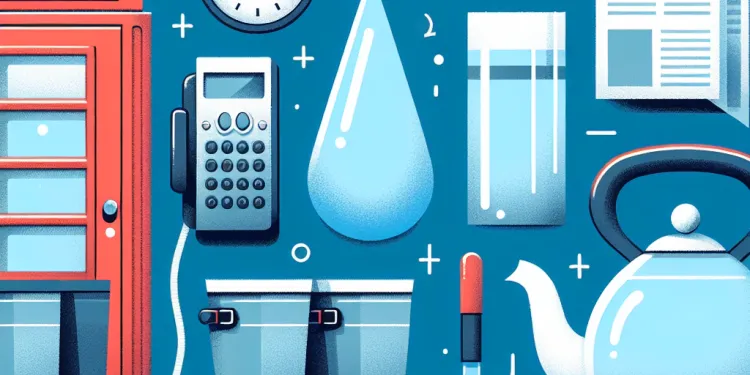
Which UK water companies are going to refund their customers?
Relevance: 41%
-
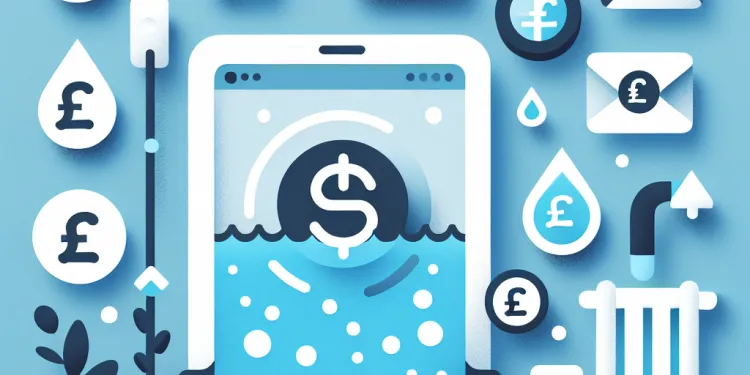
Are there penalties for water companies besides issuing refunds?
Relevance: 41%
-

Who regulates the performance and compliance of UK water companies?
Relevance: 41%
-
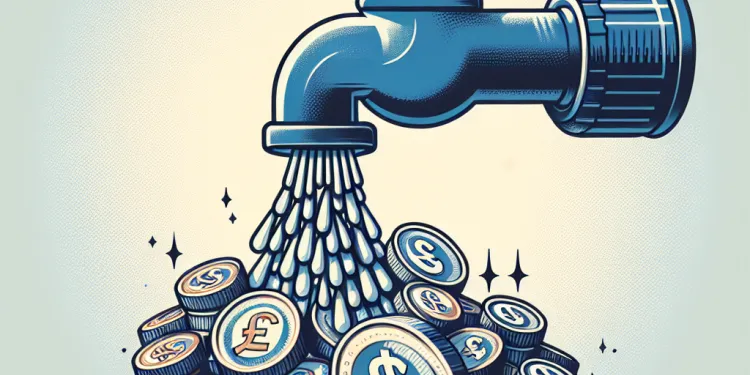
How much is being refunded in total by the UK water companies?
Relevance: 41%
-

How do water companies fund infrastructure updates?
Relevance: 41%
-
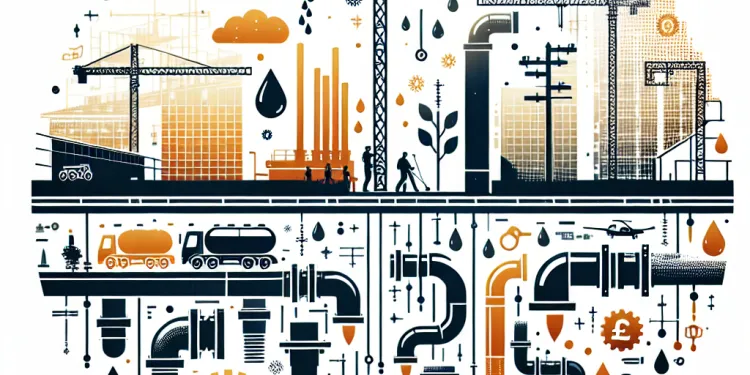
How are infrastructure priorities determined by water companies?
Relevance: 39%
-

Which body is responsible for enforcing refunds by UK water companies?
Relevance: 39%
-

How transparent are water companies regarding infrastructure improvements?
Relevance: 39%
-

Can customers report issues with water infrastructure?
Relevance: 39%
-

What can I do if the water company doesn’t respond to my claim?
Relevance: 39%
-
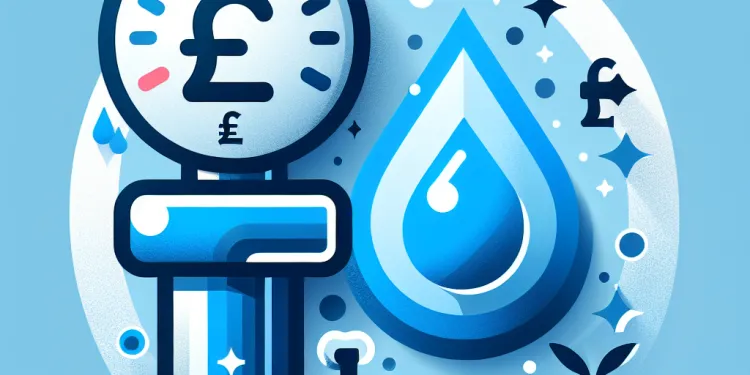
Which UK water companies are going to refund their customers for poor performance?
Relevance: 38%
-

Can water companies enter my property to enforce a hosepipe ban?
Relevance: 38%
-

Can customers appeal or discuss the refund amount with their water company?
Relevance: 38%
-

What does water infrastructure maintenance involve?
Relevance: 38%
-

Do these refunds mean water companies have increased their rates fraudulently?
Relevance: 37%
-
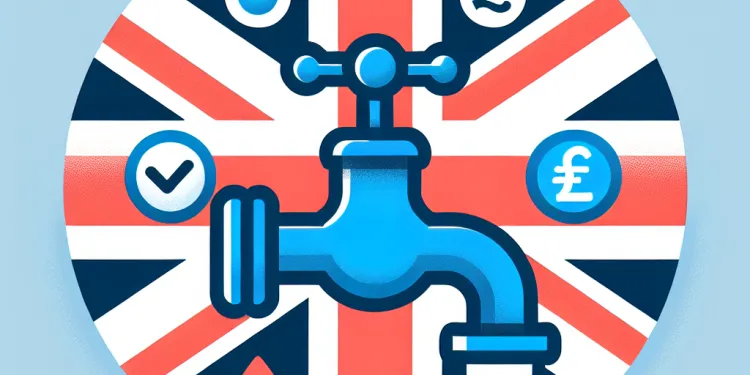
What criteria were used to determine the refunds for UK water companies?
Relevance: 37%
-

Where can customers find updates on their water company's performance standards?
Relevance: 37%
-

How can I claim money back from my water company?
Relevance: 37%
-

What is the first step to claim money back from my water company?
Relevance: 37%
-
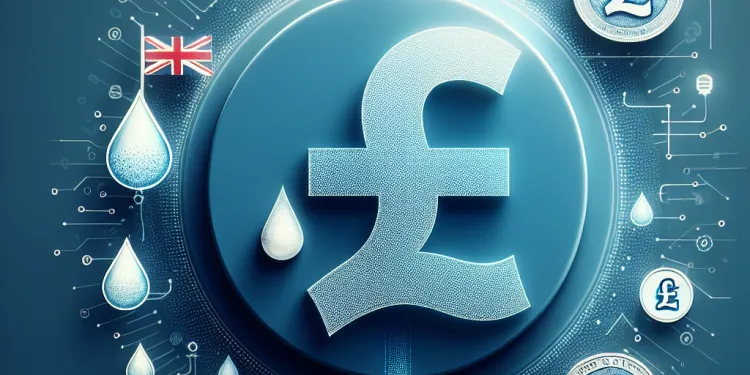
What are the financial implications of water loss for the UK?
Relevance: 36%
-

How old is the water infrastructure in the UK?
Relevance: 34%
Introduction
Water companies play a crucial role in conserving water and preventing wastage by detecting leaks in their networks promptly. Leak detection is essential not only for minimizing water loss but also for maintaining infrastructure and reducing costs in the long term. Various methodologies and technologies are employed to achieve accurate and efficient leak detection.
Advanced Monitoring Systems
Modern water companies in the UK rely heavily on advanced monitoring systems to keep track of their pipelines. These systems utilize sensors and pressure management tools to detect anomalies that may indicate leaks. By equipping key points in the water distribution network with these sensors, companies receive real-time data about changes in pressure and flow rates, enabling them to identify potential issues swiftly.
Acoustic Leak Detection
One of the most widely used techniques for leak detection is acoustic monitoring. Acoustic devices, often known as correlators, are deployed to listen for the sound of leaks. Water escaping from a pipe under pressure generates a distinct sound that these devices can detect. By placing sensors at various points on the pipeline, technicians can triangulate the position of the leak with considerable accuracy.
Ground Penetrating Radar
Ground Penetrating Radar (GPR) is another technological advance used in leak detection. GPR systems emit radar pulses into the ground and capture reflected signals to create a map of underground conditions. By analyzing these reflections, specialists can identify disruptions in the soil caused by leaking water, assisting in locating leaks without extensive excavation.
Smart Metering
Smart metering technology is increasingly being adopted by water companies to help detect leaks. These meters continuously measure water usage and can alert services to unusual patterns suggesting a leak. By providing detailed usage data throughout the day, smart meters help both providers and customers identify and address leaks more rapidly.
Drone Surveillance
Innovative solutions like drone surveillance are becoming more popular in leak detection efforts, particularly for large or difficult-to-access areas. Equipped with thermal imaging cameras, drones can fly over pipes and detect temperature changes caused by leaking water. This method is particularly effective in spotting leaks in rural or remote regions.
Conclusion
Detecting leaks in water systems is essential for conserving water, maintaining infrastructure, and reducing costs. In the UK, water companies employ a blend of traditional and cutting-edge technologies to uncover leaks swiftly and efficiently. As technology continues to advance, the methods of leak detection will undoubtedly evolve, leading to even more effective and sustainable water management.
Introduction
Water companies help save water by finding leaks quickly. This stops water from being wasted. Catching leaks early helps save money and keeps pipes in good condition. There are different ways and tools to find leaks.
Advanced Monitoring Systems
Water companies use smart tools to watch their pipes. These tools have sensors that check for problems that might mean a leak. Sensors give real-time information about water pressure and flow. This helps find problems fast.
Acoustic Leak Detection
Many companies use special listening tools to find leaks. These tools listen for the sound of water escaping from the pipe. Workers place these sensors on the pipe to find the exact spot of the leak.
Ground Penetrating Radar
Another tool used is Ground Penetrating Radar (GPR). GPR sends radar waves into the ground and makes a map of what it finds. This helps workers see where water might be leaking underground.
Smart Metering
Smart meters help find leaks by tracking water use. They can show strange patterns that might mean a leak. This helps both water companies and people find leaks quickly.
Drone Surveillance
Drones are flying tools that can find leaks from the sky. They have cameras that see heat changes from water leaks. This is useful for finding leaks in places that are hard to reach.
Conclusion
Finding leaks is important to save water and money. In the UK, water companies use different tools to catch leaks fast. As technology gets better, finding leaks will become even easier.
Frequently Asked Questions
What is leak detection in water systems?
Leak detection in water systems involves identifying and locating leaks in the water distribution network to prevent water loss and maintain system efficiency.
Why is leak detection important for water companies?
Leak detection is crucial to reduce water loss, conserve resources, minimize repair costs, and ensure the reliability of the water supply system.
What technologies do water companies use to detect leaks?
Water companies use various technologies such as acoustic sensors, pressure loggers, correlators, and satellite imagery to detect leaks.
How do acoustic sensors work for leak detection?
Acoustic sensors detect the sound of water escaping from pipes, allowing operators to pinpoint the location of a leak through the analysis of sound patterns.
What is a correlator in leak detection?
A correlator is a device that uses sensors placed on both sides of a suspected leak. It compares the sound waves to determine the leak's exact location.
How does satellite imagery help in leak detection?
Satellite imagery can identify changes in soil moisture and temperature that may indicate water leaks, offering a broad overview that complements ground-based methods.
What role do pressure loggers play in leak detection?
Pressure loggers measure fluctuations in water pressure, helping to identify unusual changes that may signal a leak in the system.
Can drones be used for detecting water leaks?
Yes, drones equipped with thermal cameras can fly over pipelines to detect temperature differences indicating water leaks.
How does dye testing work for leak detection?
Dye testing involves introducing a harmless dye into the water system. If a leak is present, the dye will appear at the site of the leakage.
What are smart water meters?
Smart water meters provide real-time data on water usage, helping to quickly identify unusual spikes in usage that may indicate leaks.
How do visual inspections contribute to leak detection?
Technicians conduct visual inspections of pipelines and surrounding areas to identify water pooling, damp spots, or other signs of leakage.
What is the role of infrared technology in leak detection?
Infrared technology detects heat patterns around pipelines, identifying anomalies that could indicate a leak by showing temperature differences.
How do water companies prioritize which leaks to fix first?
Companies prioritize leaks based on their size, location, potential water loss, and impact on the water supply to efficiently allocate resources.
How does ground-penetrating radar assist in leak detection?
Ground-penetrating radar sends electromagnetic waves into the ground to detect subsurface objects and anomalies that may indicate a leak.
What is an acoustic logger?
An acoustic logger is a device that continuously listens for leak sounds in the water distribution system and transmits data for analysis.
Can AI be used in water leak detection?
Yes, AI can analyze data patterns from sensors and historical records to predict and identify potential leaks more accurately and efficiently.
What challenges do water companies face in leak detection?
Challenges include detecting small leaks, differentiating leak sounds from background noise, and accessing difficult-to-reach infrastructure.
How often do water companies conduct leak detection surveys?
Frequency depends on system size and previous leak history, but routine surveys are typically conducted annually or semi-annually.
How do water companies repair detected leaks?
After locating a leak, the repair process may involve replacing pipe sections, sealing joints, or using trenchless technology for minimally invasive repairs.
What advancements are expected in leak detection technology?
Future advancements may include enhanced AI algorithms, improved sensor technologies, and broader integration of IoT devices for more accurate and efficient leak detection.
What is leak detection in water systems?
"Leak detection" means finding where water is escaping from pipes. It's like when you play hide and seek, but with water leaks. Finding leaks is important so we don't waste water. Special machines and tools can help us find leaks.
Finding leaks in water pipes helps us stop water from being wasted. It also keeps the water system working well.
Why do water companies need to find leaks?
Finding leaks is important. It helps save water. Water is precious. Leaks waste a lot of water.
Finding leaks also saves money. Fixing leaks stops lost water. More water can be used by people.
Leaks can damage things. Fixing them protects roads and homes from harm.
To help understand leaks, you can use pictures. Draw leaks and pipes to see how it works.
Read out loud to get better at reading. Ask someone to explain hard parts.
Finding leaks is very important. It helps save water, protect resources, spend less on fixing, and keep the water system working well.
How do water companies find leaks?
Water companies have special tools to find leaks. They use listening devices, pressure checkers, machines that find noisy spots, and pictures from space.
How do sound sensors find leaks?
Sound sensors listen for sounds. They help find leaks by hearing noises that water makes when it leaks out of a pipe.
Here is how they work:
- When water leaks from a pipe, it makes a sound.
- Sound sensors can hear these sounds, even if we cannot.
- People use these sensors to find where the leak is coming from.
Using simple tools and pictures can help understand this better. Also, asking someone to explain it using objects like a water bottle and a straw can make it clearer.
These sensors listen for the sound of water leaking from pipes. This helps workers find out exactly where the leak is by studying the sounds.
If reading is hard, try using pictures to understand better.
You can also ask someone to read the text out loud and explain it to you.
What is a Correlator for Leak Detection?
A correlator is a tool. It helps find leaks in pipes. It listens for sounds from water leaks. It can tell where the leak is in the pipe.
How does it work? The correlator has sensors. You put these sensors on the ground or on pipes. The sensors hear sounds from the pipe. The correlator checks these sounds. It helps find the leak’s spot.
Using a correlator can help fix leaks quickly. This saves water and money.
If you find reading hard, you can:
- Read one sentence at a time.
- Ask someone to read it with you.
- Use pictures or videos about leak detection.
- Break words into smaller parts if they are hard.
A correlator is a special tool. It has sensors that are put on both sides of where a leak might be. It listens to sounds to find where the leak is exactly.
How do pictures from satellites help find leaks?
Satellites take pictures of the Earth from space. These pictures can show changes, like water or gas leaking. This helps people find and fix leaks faster.
Here are some tools and tips to help understand better:
- Ask someone to read with you.
- Use voice-reading apps to listen to the text.
- Look at videos or pictures about satellites.
Pictures taken from space can help us see changes in the ground. They can show us if the ground is wetter or warmer in some places. This can help us find water leaks. These space pictures work well with the tools we use on the ground.
How do pressure loggers help find leaks?
Pressure loggers are special tools. They check water pressure in pipes. This helps find leaks.
When there is a leak, the water pressure goes down. Pressure loggers can see this change.
By finding leaks early, we can fix them and save water.
Using pictures or videos can help you learn more about pressure loggers.
Pressure loggers are little gadgets. They watch how water moves. They look for water changes that don't seem right. This helps us find leaks.
Can drones help find water leaks?
Yes, drones can help find water leaks. They have special cameras and tools to see things that people might miss. This makes finding leaks faster and easier.
Learning tip: Use pictures and videos to understand how drones work. They can show you more about how drones help find leaks. Ask a teacher or friend for help if you need it.
Yes, drones with special cameras can fly over pipes to find water leaks. These cameras see heat and cold to spot leaks.
How does dye testing find leaks?
Dye testing helps find leaks in pipes or places like a swimming pool. It works like this:
1. A special color, called dye, is put into the water.
2. If there is a leak, the dye will move to where the water is escaping.
3. You can see the colored dye, so you know where the leak is.
It's like using a colored marker to see where water is going. If you're having trouble, you can use a magnifying glass to see better, or ask for help.
Dye testing is a way to check for leaks in water pipes. We put a safe color dye into the water. If there is a leak, the dye will show up where the water is coming out.
If reading is hard, you can use helpful tools like reading rulers or text-to-speech software. These can make reading easier.
What are smart water meters?
A smart water meter is a tool that helps you see how much water you use. It is clever because it can talk to a computer and give you information about your water use.
Here is how it works:
- The meter measures the water you use in your home.
- It sends the information to a computer or an app.
- You can check this information to help save water.
Helpful tools:
- Apps: Use an app on your phone to track your water use.
- Pictures: Look at pictures to see how the meter works.
Smart water meters show how much water you use right away. This helps you see if you are using too much water and see if there is a leak.
How do looking at things help find leaks?
When you look carefully at things, you can find where a leak is. If you see water on the floor or a wet spot, that can be a clue. Use a flashlight to see better in dark places. Taking pictures can also help remember where the leak is.
Technicians check pipelines. They look for water puddles, wet areas, or other signs of leaks.
How does infrared technology help find leaks?
Infrared light helps us find heat patterns near pipes. When it sees something different, it might mean there is a leak. This is because the temperature changes where there is a problem.
How do water companies decide which leaks to fix first?
When water companies find leaks, they need to choose which ones to fix first. They do this by checking a few things:
- Size of the leak: Big leaks are fixed before small ones.
- Location: Leaks in busy places, like streets or near homes, are fixed quickly.
- Impact: If a leak wastes a lot of water or could harm people, it needs an urgent fix.
Tools to help:
- Water sensors: These help find leaks.
- Maps: Show where the leaks are.
- Phones or tablets: Workers use these to report leaks quickly.
Companies look at leaks and decide what to fix first. They check how big the leak is, where it is, how much water might be lost, and how it affects the water supply. This helps them use their resources the best way possible.
Helpful Tip: Use tools like screen readers or text-to-speech apps to assist with reading. Highlighting keywords can also help understand the important parts.
How can ground-penetrating radar help find leaks?
Ground-penetrating radar (GPR) is a special tool. It sends signals into the ground. These signals can find things like water or pipes. Here’s how it helps find leaks: 1. **Sends Signals:** GPR sends waves into the ground. 2. **Finds Hidden Things:** The waves bounce back if they hit something, like pipes. 3. **Shows Leaks:** If the pipe has a leak, the signals might show it. **Helpful Tip:** If you have trouble reading or understanding, ask someone to explain or use a picture.Ground-penetrating radar is a tool. It sends waves into the ground. These waves find things under the ground, like pipes or leaks.
What is an acoustic logger?
An acoustic logger is a tool. It helps listen to sounds in the water. People use it to study animals like whales or dolphins.
Helpful Tip: Use pictures or videos to understand better. Ask a friend or teacher if you have questions.
An acoustic logger is a tool that helps find leaks in water pipes. It listens for leaking sounds all the time and sends this information for checking.
Can AI Help Find Water Leaks?
Yes, AI can look at data from sensors and past records to find and predict leaks more easily and correctly.
What problems do water companies have when finding leaks?
Some problems are finding small leaks, telling leak noises apart from other sounds, and getting to places that are hard to reach.
To help with this, you can use tools like listening devices and sensors. Practice listening carefully and ask for help from experts if you need it.
How often do water companies check for leaks?
How often you check for leaks depends on how big the system is and if there were leaks before. Usually, checks are done once or twice a year.
How do water companies fix leaks they find?
Water companies fix leaks in pipes. Here is how they do it:
- First, they look for where the water is leaking.
- Once they find the leak, they stop the water flow.
- Then, workers dig to reach the pipe if needed.
- They fix the broken part of the pipe.
- After fixing, they check if the pipe is working well.
If you find reading hard, you can:
- Ask someone to read to you.
- Use pictures or videos to understand.
- Take your time when reading.
When you find a leak, fixing it might mean doing a few different things. You might change parts of the pipe, fix where the pipes join together, or use a special way to fix it without digging too much.
What new things are coming in finding leaks?
We can look forward to new tools that help find leaks better. These tools might be faster and more accurate. They could use special sensors or computers to tell if there is a leak. It's important because finding leaks quickly can save water and money.
To understand better, you can use pictures or videos. Ask someone you trust to explain it too. Tools like reading rulers and simple diagrams can help.
In the future, new technology might help us find leaks better. There will be smarter computer programs, better sensors, and more gadgets that talk to each other. This will make finding leaks easier and faster.
Useful Links
- Ergsy carfully checks the information in the videos we provide here.
- Videos shown by Youtube after a video has completed, have NOT been reviewed by ERGSY.
- To view, click the arrow in centre of video.
- Most of the videos you find here will have subtitles and/or closed captions available.
- You may need to turn these on, and choose your preferred language.
- Go to the video you'd like to watch.
- If closed captions (CC) are available, settings will be visible on the bottom right of the video player.
- To turn on Captions, click settings .
- To turn off Captions, click settings again.
More Items From Ergsy search
-

How do water companies detect leaks?
Relevance: 100%
-

Why is it challenging to fix water leaks in the UK?
Relevance: 65%
-

What are common signs of leaks in water infrastructure?
Relevance: 58%
-

Are water companies responsible for maintaining water infrastructure in the UK?
Relevance: 53%
-

What challenges do water companies face in maintaining infrastructure?
Relevance: 52%
-

Do water companies have to update the infrastructure?
Relevance: 50%
-

How significant is the water loss problem in the UK?
Relevance: 48%
-

How much water is lost in the UK through poor infrastructure?
Relevance: 48%
-

How are new technologies helping to reduce water loss in the UK?
Relevance: 47%
-

When will the refunds be issued by the UK water companies?
Relevance: 46%
-

What percentage of water is lost through leaks in the UK?
Relevance: 46%
-

Are water companies responsible to maintain and update infrastructure in the UK?
Relevance: 45%
-

Do water companies have long-term infrastructure plans?
Relevance: 44%
-

What causes water loss in the UK?
Relevance: 44%
-

What measures are being taken to address water loss in the UK?
Relevance: 44%
-

How does public reporting contribute to fixing leaks?
Relevance: 43%
-

How many UK water companies are involved in the refund process?
Relevance: 43%
-

What role do water companies play in sewage pollution?
Relevance: 43%
-

Are there any government initiatives to tackle water loss in the UK?
Relevance: 42%
-

Which UK water companies are going to refund their customers?
Relevance: 41%
-

Are there penalties for water companies besides issuing refunds?
Relevance: 41%
-

Who regulates the performance and compliance of UK water companies?
Relevance: 41%
-

How much is being refunded in total by the UK water companies?
Relevance: 41%
-

How do water companies fund infrastructure updates?
Relevance: 41%
-

How are infrastructure priorities determined by water companies?
Relevance: 39%
-

Which body is responsible for enforcing refunds by UK water companies?
Relevance: 39%
-

How transparent are water companies regarding infrastructure improvements?
Relevance: 39%
-

Can customers report issues with water infrastructure?
Relevance: 39%
-

What can I do if the water company doesn’t respond to my claim?
Relevance: 39%
-

Which UK water companies are going to refund their customers for poor performance?
Relevance: 38%
-

Can water companies enter my property to enforce a hosepipe ban?
Relevance: 38%
-

Can customers appeal or discuss the refund amount with their water company?
Relevance: 38%
-

What does water infrastructure maintenance involve?
Relevance: 38%
-

Do these refunds mean water companies have increased their rates fraudulently?
Relevance: 37%
-

What criteria were used to determine the refunds for UK water companies?
Relevance: 37%
-

Where can customers find updates on their water company's performance standards?
Relevance: 37%
-

How can I claim money back from my water company?
Relevance: 37%
-

What is the first step to claim money back from my water company?
Relevance: 37%
-

What are the financial implications of water loss for the UK?
Relevance: 36%
-

How old is the water infrastructure in the UK?
Relevance: 34%


